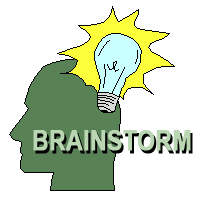
Page 2/3 |
Find a Team
Most Connecting Rural Communities projects start with an individual or a small group of individuals who realize how important broadband services and the use of digital technologies are to their community's economic and social well-being.
Whether you are only going to work on a few small projects or undertake a multi-year initiative to build digital capacity across the community, you need to recruit and organize people that will energize and guide the project from start to finish. You will need both a project champion and a leadership team.
Connecting Rural Communities Project ChampionMost successful connecting communities projects will have one or two individuals who acts as project champions. The champion should understand how digital technologies can benefit individuals and organizations in the community. The champion needs to be able to communicate these benefits in non-technical terms. The champion will:
- Recruit Leadership Team members.
- Organize Leadership Team meetings.
- Arrange for one-on-one or small group discussions with key community leaders.
- Identify and recruit residents to serve on Connecting Rural Communities project teams.
-
Attend meetings of community organizations such as governmental boards, service clubs, non-profits to discuss the Connecting Rural Communities project and its role in moving the community into the Information Age.
| Successful champions should be charismatic, have good communication skills, understand the importance of digital technologies for the future of the community and be able to build commitment for the effort among members of community organizations. |
Do you have a few people in mind who might be your PROJECT CHAMPION? If so, type their names in the Brainstorming section below.
The Leadership Team
You will need a team of community members to help you start this process. These should be people that strongly believe that information technology is crucial to the future of the community. Be inclusive; everyone has a stake in creating a connected community. Team members should represent:
- Government
- Public safety services: police, fire, and EMTs
- Citizens
- Health Providers & Services
- Youth groups
- Education: K-12 to College, both public and private
- Businesses: large and small
- Work at home moms and dads
- Nonprofits
- Economic Development
- Telephone Companies, Cable Companies, Electrical Utilities, Internet Service Providers (ISPs), and other existing or potential broadband vendors
- Anyone with a interest in the project
The leadership team of 3 to 9 members will direct and coordinate the process of identifying potential connecting rural communities projects. They should understand (or be willing to learn about) the benefits that digital technology will bring to the community's children and families, schools, businesses, government, libraries, and non-profits.
Members don't have to be technology experts. The team will be more effective if there is a mix of community experts and technology experts. Community experts are individuals who are influential and know the community power structure. Technology experts include IT directors and staff from community-based organizations including government, business, healthcare, and education.
Leadership Team Responsibilities
Leadership team members will network with the formal (governmental, business, religious and non-profit/foundation) and non-formal (social organizations, service clubs) leaders in the community.
The key responsibility of the leadership team is to guide the process of increasing digital development in the community. Because digital development is a process that occurs over time their responsibilities and activities will evolve. The leadership team will likely be directly involved in the initial projects. As the project evolves - engaging additional organizations and the number of projects grows - the leadership team will take on other roles including coordinating communication between project teams and facilitating teams through the process
Here is a blank Leadership Team Identification Worksheet (PDF) that can also be used to identify potential leadership team members.
Page 2/3 |
Web site and all contents © Copyright SRDC 2009, All rights reserved. |
|
| These materials were developed as part of the Southern Rural Development Center’s National e-Commerce Extension Initiative. They are based upon work supported by the Cooperative State Research, Education, and Extension Service, U.S. Department of Agriculture, under Award No. 2005-45064-03212 Any opinions, findings, conclusions, or recommendations expressed in this publication are those of the author(s) and do not necessarily reflect the view of the U.S. Department of Agriculture or the Southern Rural Development Center. |
|
